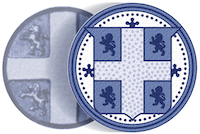Robert Singleton
Submitted by Wayne Rumley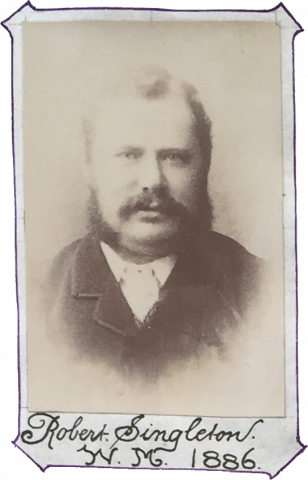
This article was first published 26th February 2021, but bumping it to our front page following the article in the Sunderland AFC match programme on New Year's Day, 2025.
Robert Singleton was born in July of 1852 in Garstang, Lancashire, to Robert Clifton Singleton and his wife Susannah (nee Dickinson). He was the second of six children, having four brothers and a sister. On the 1861 census his mother is listed as an Innkeeper’s widow, so she was left with a very young family to tend to.
The next record we have of the family is the 1871 census, and this shows that they have relocated to Preston. By now Robert has turned 18 and his profession is that of Pupil Teacher. A Pupil Teacher in those days was effectively an apprenticeship whereby a senior scholar would tutor some of the younger children whilst completing their own education. It is the teaching profession that provides the initial link to Sunderland.
Exactly when he arrived in Sunderland we can’t be sure, but what is known is that he became the Headmaster at Gray School in Hendon, a position he held from May 1877 to December of 1884. It is during this period that his, arguably, greatest claim to fame, albeit scarcely known, came to pass. More on that later!
In December of 1884 he was appointed Superintendent of the George Hudson Charity. A position he held until his death in 1895, at the young age of 42.
He was an active townsman, serving on the Sunderland School Board, on the board of Guardians for the local Workhouse, providing provisions for the local YMCA, organising large-scale picnics, and latterly becoming a Councillor for the East Ward (Hendon as we know it).
He had seven children, four sons and three daughters with his wife, Sunderland born Isabella Hardy, although not all survived into adulthood.
They lived at 12 Peel Street in Hendon and this is also where Robert eventually died. A rather sorry end and a curious case. At an inquest into his death, his wife said that he had been unwell for around a month, and on the evening before his death he had fell and hit his head, fracturing his skull and causing bleeding. Various witnesses said they had seen the bleeding but that both he and his wife had been drinking quite heavily. Then it was the turn of the doctor, who said there was no fracture, he’d been treating him before for acute inflammation of the liver and that he believed the cause of death was alcohol poisoning! A verdict the jury agreed with. It makes a for an interesting, if quite sorry, read. (See the Gallery)
Freemasonry
He was initiated into this lodge on the 14th of August 1879, immediately getting involved with the Offices of the lodge as he was appointed as an auditor in December of that same year, being ultimately Installed as Worshipful Master in December of 1886. He was appointed Director of Ceremonies of the lodge in 1889, an office he held until 1894.

Palatine Membership Record
He served on the Charities Committee for the Province from 1888 until his death in 1895 as the Palatine representative. He was awarded Provincial Honours (a rarity in those days) and held the rank of Past Grand Junior Deacon.
He was also active in Holy Royal Arch, being a member of the Chapter of Strict Benevolence No.97, and the Mark, as a member of the Union Lodge of Mark Masters Masons No.124, being Installed Master of that lodge on the 23rd April 1891.
It is fair to say that he made a great contribution and would have been a loss to Freemasonry.
Now, about that claim to fame…
I’m sure any local historian who has an interest in football will have heard of James Allan, considered by many as the founder of Sunderland AFC. Sunderland was very much a rugby town when James Allan arrived from Glasgow University in April of 1879 to take up a teaching post at Hendon Board School. One thing Allan brought with him to Sunderland was a round ball! It is both fair and true to say that he introduced football as we know it to the town.
However, surely you can’t have just one founder of a football team? No, you can’t. In the 27th of September 1880 edition of the Sunderland Echo it is reported as such:
SUNDERLAND AND DISTRICT TEACHERS FOOTBALL CLUB.- The teachers of Sunderland and district have formed a football club, and the office bearers have been appointed as follows:- Captain and treasurer, Mr Singleton ; vice-captain, Mr Allan ; secretary, Mr Elliot, 4, Rudland-terrace ; committee, Messrs Gibbons, Chappel, Coates, and Sewell.
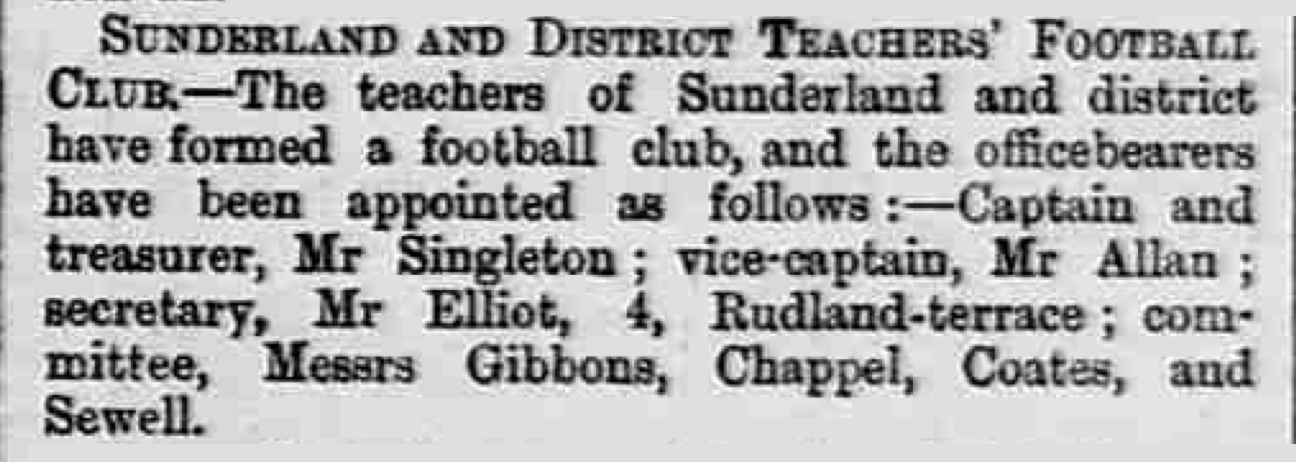
Sunderland Daily Echo, Monday, 27th September 1880
That’s right, not only was Robert Singleton one of the founders of Sunderland Football Club, he was also the very first captain! In a town with such a proud footballing history as ours, and a lodge with such a proud history as ours, it is surprising that this gem of a fact has remained hidden for so long!
Now, far be it from me to say he doesn’t look like the typical footballer (not that there was such a thing back then), but it is no surprise that his position was either that of ‘goal’ or ‘back’.
Here he is pictured in the earliest surviving photograph of the team (1884), second from right, back row. James Allan is second from left, middle row. Another player of note is John Grayston, second from right, middle row, with Singleton’s hands resting on his shoulders.
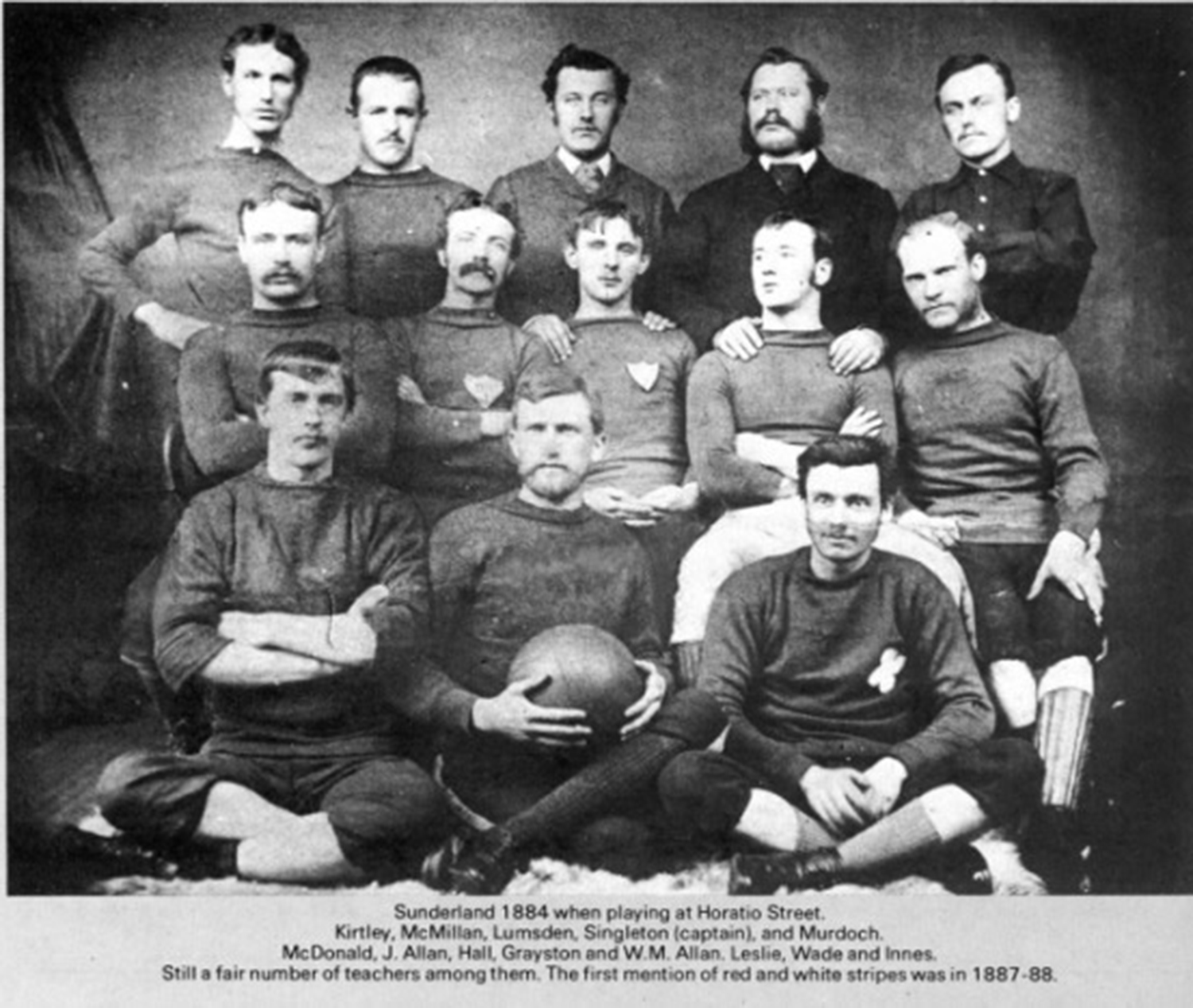
Sunderland - 1884
They played in a blue strip back then, so here is my rather quick and crude attempt at colourising it.
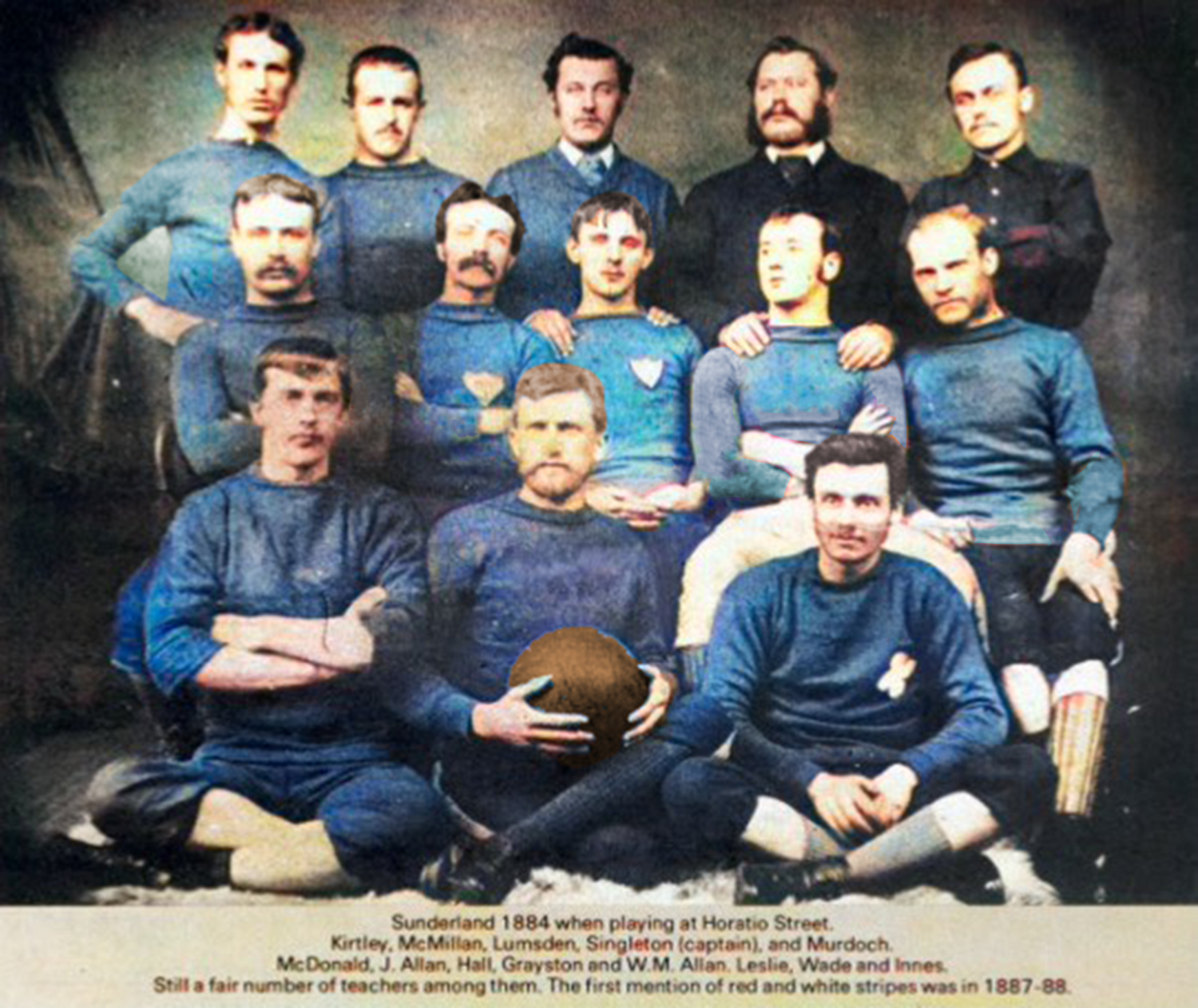
Sunderland - 1884 - Colourised
He also became involved at county level and to such an extent that in December of 1889 he was presented with a marble time-piece in recognition of his services as honorary treasurer.
So, there we have it, no doubt an interesting character and one who certainly kept himself busy helping his community, one of many who have passed through this lodge, and now we know that amongst the many worthy men that have been members, we also have a founder, and the very first captain, of Sunderland Association Football Club!
Notes of Interest
Gray School Hendon – This was founded by the Reverend Robert Gray, rector of Sunderland from 1819-1838. He was instrumental during the Sunderland Cholera Epidemic in the 1830s, as was another former member of this lodge, Dr Wm Reid Clanny. More on Dr Clanny in a future article.
George Hudson Charity – George Hudson was known as the The Railway King, you can read more about him here. It is noteworthy that the charity not only still exists, but still resides in 54 John Street, Sunderland, where it has been for over 125 years. Whilst Hudson was not a member of our lodge, his Grandson, Robert Hudson was.
Masonic Meetings – During this time period Palatine Lodge met in the Masonic Hall in Park Terrace, Sunderland. This is the Masonic Temple that has now been rebuilt at Beamish Museum in the 1900s town; you can visit the very same room.
James Allan – whilst not a Freemason when he started playing football, he became one. He was a member of Williamson Lodge No. 949 from 1899 until his death in 1911. A brief biography is available here.
John Grayston – he wrote his footballing memoirs in early 1931 and it is his account that formed the basis for a lot of the popularly known history of the club, not all accurate, as the historical reports in the newspapers show. He played in the second ever game and is also rightly considered a founder, but he undoubtedly ‘played up’ his part – he was only 18 at the time. He was also a Freemason and member of Williamson Lodge, being initiated in 1894.
12 Peel Street, Hendon – Singleton's home address. The house still stands, and if you happen to drive past or look on Google Maps – it’s the bright yellow one!
Sunderland AFC History – The club's own records give the date of 1879 for the forming of the club. I questioned this in my original version of the article but I have since been contacted by the clubs historian, and I am happy to be corrected. They consider the birth of the club to have been 1879 as it would have taken some organising before an official announcement could be made, which was the 1880 date. A fuller explanation can be found on the club's website. All of the mentioned newspaper entries can be found in the below gallery.
References
The History of Palatine Lodge Volume One (1757-1907)
The British Newspaper Archive (Sunderland Daily Echo records)
The Stat Cat – Lots of research already carried out here, and also has an analysed copy of the Grayston Memoirs.
University of Sunderland - Seagull City blogs
Ancestry.co.uk - Masonic Records Collection
